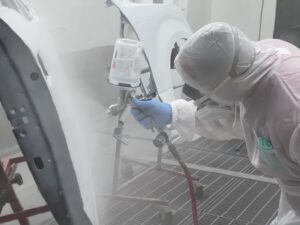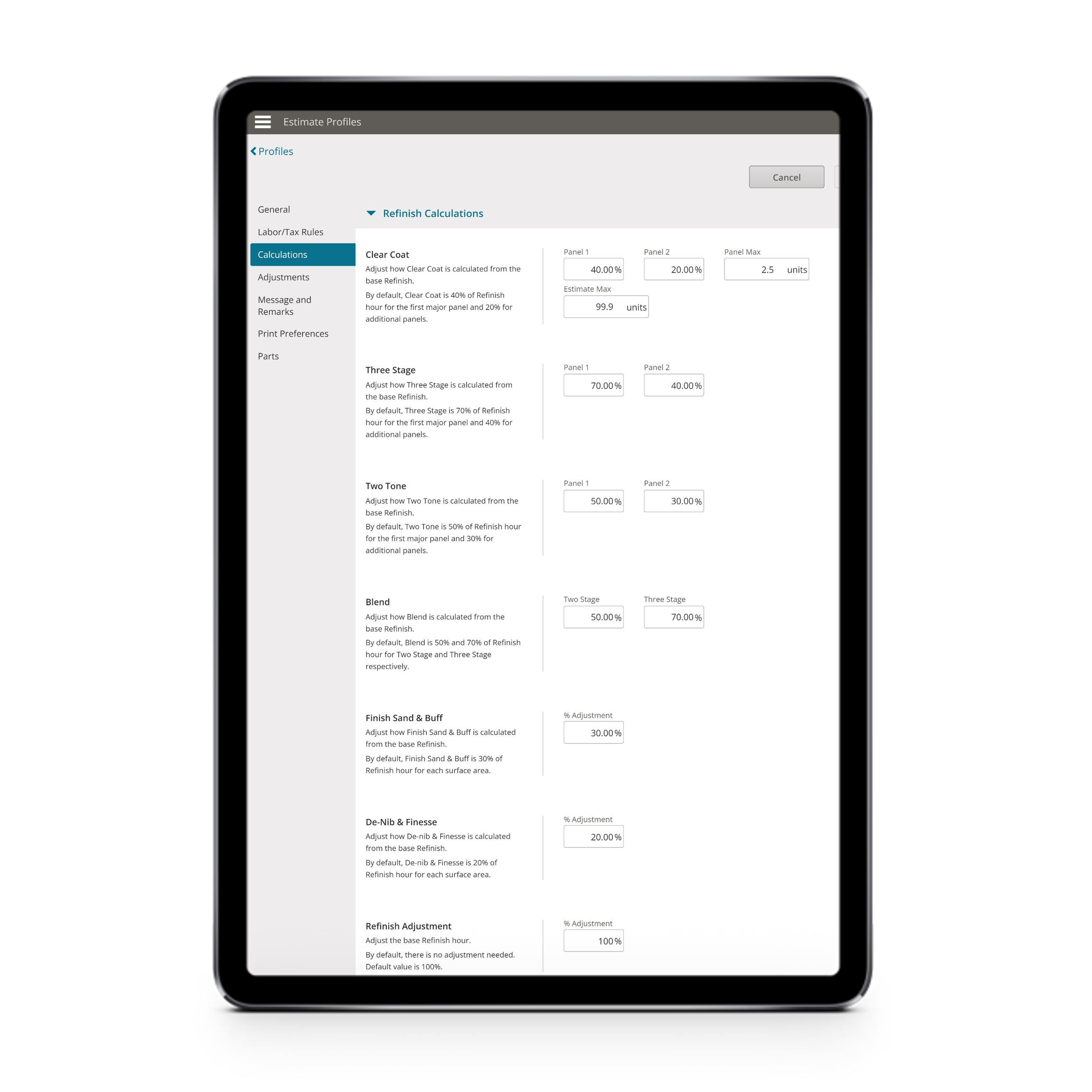
Mitchell profile setting changes to allow for user-defined blend percentages; won’t change guidance
By onAnnouncements | Collision Repair | Repair Operations
Mitchell will update its cloud estimating tool next month to allow for flexibility in labor time calculations for refinish operations, such as blending, Jack Rozint, Mitchell repair sales senior vice president, says.
Rozint casually announced the news during an open mic session at the Collision Industry Conference in Palm Springs, California Wednesday.
Aaron Schulenburg, Society of Collision Repair Specialists executive director, asked Rozint if the updates would include changes in the company’s guidance on blend formulas within the CEG.
Rozint replied there would be no change at this time.
When asked for a written statement detailing the changes announced, Rozint replied, “Next month, we will release enhancements to Mitchell Cloud Estimating for refinish operations. Designed to offer users greater flexibility and control over labor time calculations, these enhancements make it possible for collision-damage appraisers to adjust all seven common refinish calculations in the estimate profile—including blend of an adjacent panel as well as de-nib and finesse. There are no changes to Mitchell’s default settings for these items at this time.”
Rozint did not respond to a question from Repairer Driven News asking for an elaboration on why Mitchell would not be changing its guidance.
A screenshot showing how users can set up and modify profiles in the estimating tool for refinish operations was provided.
A blend study was conducted by SCRS in August 2022, in coordination with AkzoNobel Vehicle Refinishes, Axalta Coating Systems, BASF Automotive Refinish, PPG Industries, and Sherwin-Williams Automotive Finishes. The purpose was to study the comparative difference between the time necessary to perform a full refinish on an exterior panel and the time needed to blend the same panel.
The study concluded blending took 31.59% more time on average than a full refinish based on results from refinish operations compared on 45 different parts with three colors from the five paint and coatings companies. The results were a stark contrast to the 50% less time historically allocated in the three estimating systems.
Audatex/Solera’s blending refinish guidelines were updated in its Database Reference Manual (DBRM) in recent months.
Users of Audatex have been able to adjust labor time for refinish labor since October.
David Davoodi, Solera Product Management Senior Director told Repairer Driven News in November 2023 that Solera was already aware of the concerns SCRS and other repairers had for months, if not years, prior to the release of the blend study results in November 2022 from “a broader conversation, primarily on the shop side.”
Examples of feedback he cited were paint and refinish operations becoming more complex because of matte finishes, four-stage refinishing, and very deep reds, which require a lot more labor time.
“We were saying, ‘You know what, actually, there is a lot of changes happening. There are matte finishes now [and] cars have different types of paint,’” Davoodi said. “What we found is it varies. So while some might say, ‘Hey, we’re just going to change it to be this value,’ what we really found is it actually may change depending on your book of business and what you’re doing. We did leverage the existing 50%, which has been set for quite some time, but recognizing that there is a need, especially if your book of business warrants it, as a shop you can now go and update that.”
In April 2023 MOTOR issued a press release announcing research it had conducted, and pending changes.
“Throughout the first quarter of 2023, MOTOR reviewed information from multiple sources and has concluded that the current formula reflects an estimate for one particular scenario but does not necessarily reflect the many variations encountered with modern vehicle finishes and design,” said John McDonald, MOTOR’s product portfolio manager, content. “Given the variations among scenarios today, MOTOR believes that the Estimated Work Time Development methodology should defer to the judgment of an estimator or appraiser following an on-the-spot evaluation of the specific vehicle and refinish requirements in question.”
“We do support MOTOR’s decision,” CCC Intelligent Solutions Product Management Vice President Mark Fincher said at the time of the release. “We think this is a good outcome for the industry as a whole and accurately reflects the variation in the process as MOTOR described in the release.”
As of October, MOTOR updated guidance in the Guide to Estimating (GTE), removing the prior formulas and adding the following language:
Color Blend (Adjacent Panels)
Estimated refinish times for color blending should defer to the judgment of an estimator or appraiser following an on-the-spot evaluation of the specific vehicle and refinish requirements in question.
Three-Stage Color Blend (Adjacent Panels)
Estimated refinish times for color blending should defer to the judgment of an estimator or appraiser following an on-the-spot evaluation of the specific vehicle and refinish requirements in question.
CCC’s Zendesk Knowledge Base made updates regarding refinish times last year as well.
Images
Featured image: A painter takes part in the audited and monitored SCRS blend study in August at the Global Finishing Solutions (GFS) Center for Excellence in Osseo, Wisconsin.

